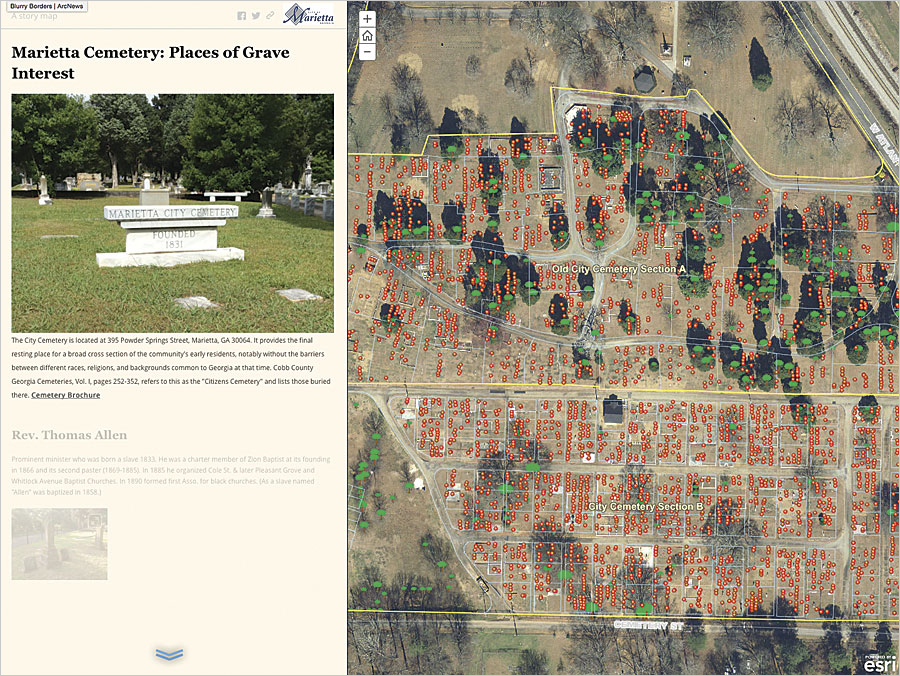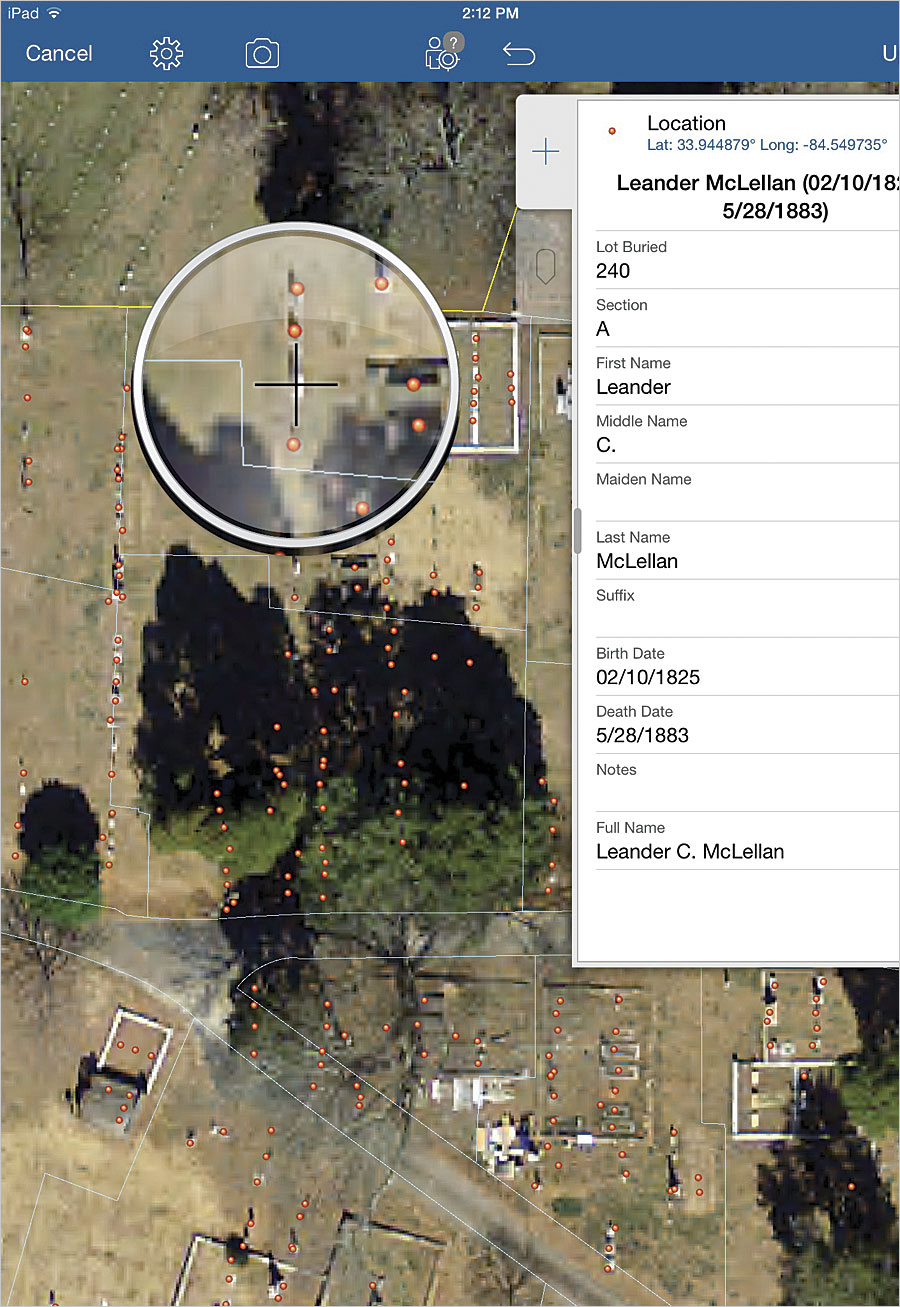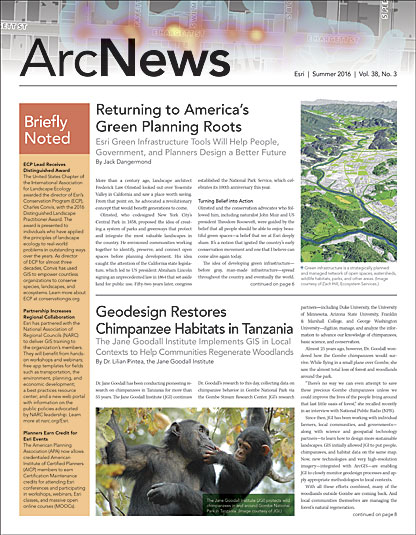A city steeped in history has a responsibility to tell its stories.
The City of Marietta, Georgia—a pre-Civil War suburb of Atlanta and home to almost 60,000 people—recently fulfilled its storytelling responsibility by choosing to improve its grave marker data and highlight the lives of those buried in its local cemetery. To collect the data, improve it, and share it with the public, the city turned to its GIS department.

With 4,500 grave markers to improve and plenty to highlight, Marietta’s GIS staff faced a formidable challenge: Finding ways to add recent burials, increase grave marker location accuracy, and attach photos to an existing grave marker layer—all without access to wireless Internet or cellular connections.
Nothing Set in Stone
To more accurately locate grave markers and be able to attach photos to them, the GIS staff first tried geotagging, which entails attaching coordinates to digital images. Because mobile devices with geotagging capabilities were readily available, the staff wasted no time in testing geotagging on a few grave markers.
Unfortunately, the tests elicited two deal-breaking complications. First, the accuracy of the resultant coordinates was not high enough to differentiate between each grave marker. Second, the staff could only assign coordinates to the images when the devices had access to wireless Internet or a cellular signal. Since wireless Internet did not exist at the cemetery and acquiring a cellular data plan exceeded the project’s scope, the staff buried the option of geotagging.
A Solution Appears
Just like the original sculptors of the cemetery’s ornate grave markers, Marietta GIS needed to use all available tools to improve the accuracy of its grave marker data. Rather than stone, chisels, brick, and mortar, however, the staff assembled tablets, Collector for ArcGIS, off-site wireless Internet, and an ArcGIS Online organizational account. It was not until this inventory was gathered that a mobile editing workflow began to materialize.
ArcGIS Online could host the existing grave marker layer along with an aerial image of the cemetery. Before leaving the range of city hall’s wireless Internet signal, editors could use Collector to generate an editable, offline map of grave marker points and aerial imagery on each tablet. This enabled editors to add new grave markers to the map, move existing ones to more accurate locations (based on the aerial image), take photos of each grave marker, attach those photos to each grave marker point, and temporarily store all the collected data on each tablet—all without a wireless Internet signal. Additionally, upon returning from the cemetery, editors could use city hall’s wireless Internet connection to synchronize their collected data with the city’s ArcGIS Online hosted data.
Collection Gets Off the Ground
With a mobile editing workflow in place, the six editors on the team began taking trips to the cemetery right away. While the transition from the bustling, air-conditioned, Internet-connected offices of city hall to the quiet, humid, disconnected grounds of the city cemetery took some rigor, it was only a fraction of the toughness and grit that the buried individuals exhibited over their lifetimes.

Editors trod lightly among their offline cache of grave marker points and aerial imagery. They took photos of each grave marker reverently, keeping the perspectives of surviving family members, historians, and genealogical explorers in mind. Processing about 35 graves per hour, the team made short work of the data collection, and the synchronized data began to fill in on the hosted ArcGIS Online grave marker layer.
Once the majority of the data was collected, it was time to start highlighting some of the special stories from Marietta’s past.
Telling a Ghost Story (Map)
Hosting data in ArcGIS Online not only made mobile editing possible but also allowed the staff to easily build a hosted web application that the public could access. Using Esri Story Map apps, the team merged its newly collected data with an existing stack of historical narratives and vintage photographs.
The stories began to take form. And the GIS staff only needed a few hours to create and publish a polished story map.
In it, users can learn about Mary Gartrell, whose sister, for 48 years, walked in mourning attire so often from Atlanta to Marietta to visit her grave that the sibling reaped the moniker Lady in Black. People could also now find out that Steadman V. Sanford, the namesake of the University of Georgia’s famed football stadium, and Alexander Stephens Clay, the first US senator from the area, are both buried in the Marietta Cemetery. The staff even highlighted extraordinary trees—those quiet witnesses to history—such as the water oak that boasts the cemetery’s largest canopy of over 86 feet.
The final story map, called Marietta Cemetery: Places of Grave Interest, was exactly what the city needed to present the cemetery’s fascinating history in an electronic format.
When an End Is Not the End
Since the city of Marietta places great value and respect on the breadth of its surrounding history, the decision to improve and highlight aspects of its cemetery was easy. The challenges arose when determining how best to bring the stories of the past into the modern, technological present. Marietta’s GIS team faced these challenges head on and successfully deployed a host of Esri tools—with both online and offline functionality—to achieve its goals.
As those living today make new history, Marietta can build on its revamped technological foundation and continue to accept its responsibility to keep the stories of the past alive.
About the Author
Ross Brewer, GISP, is a GIS analyst for the city of Marietta and has been in local government GIS for eight years.

